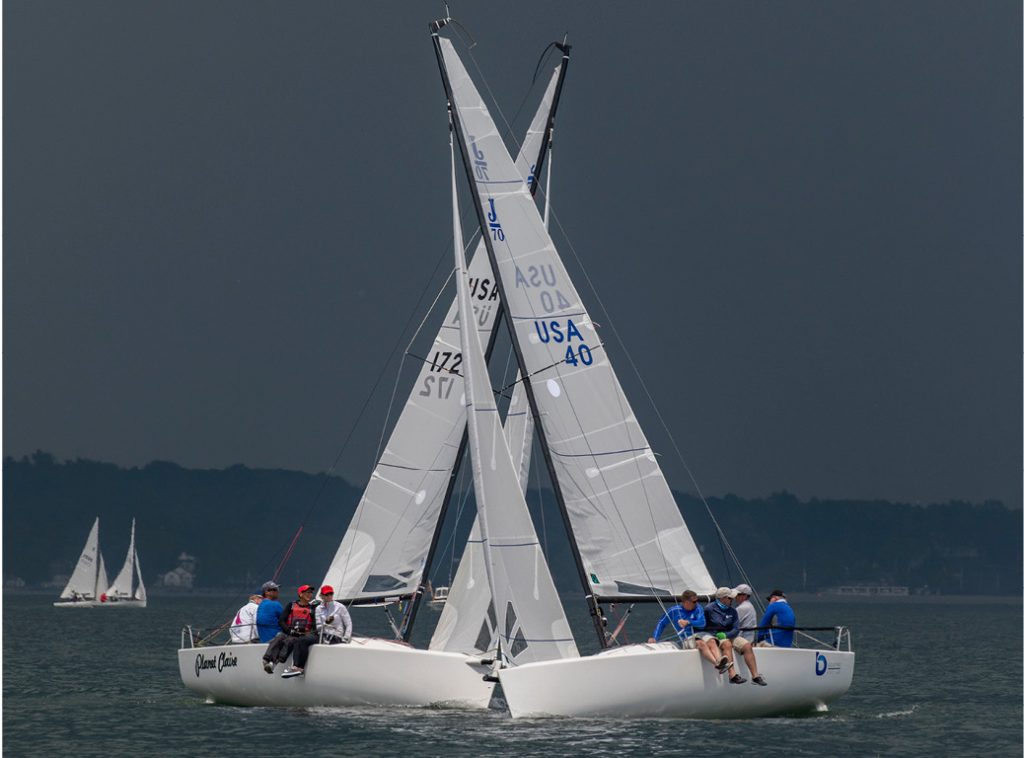By far the most common way that two boats interact on a beat is when they come together on opposite tacks. This happens many times during a race, and the tactics you choose to employ in each case can make a huge difference in your race results.
The obvious first step is keeping a good lookout so you know when another boat is coming. The next step, and probably the most important when boats converge, is to mentally review your strategic game plan. In simple terms, do you like the right side, or the left? This will have a huge impact on your tactical decision and is therefore critical to know before you engage the other boat.
When you meet another boat on the racecourse, you have several tactical objectives:
1) To come out of that situation so you are headed in the correct direction strategically. This is the most important goal;
2) To lose as little time as possible while maneuvering around the other boat. In other words, don’t lose sight of the big picture; and
3) To force the other boat to go in the unfavored direction. This is a secondary goal unless you are in a situation (e.g a match race or a fight to win the series) where you really need to beat that competitor.

One of the most important prerequisites for anticipating your next move is keeping a good lookout. This is a job that should be shared by as many of your crew as possible. © Stephen R Cloutier
As you converge with a starboard tacker (S), keep the following things in mind:
• S has the right of way, so be sure to keep clear and avoid fouling her. There are, however, some limits on S’s ability to change course near you (see rule 16), and these can work in your favor. For example, if you bear off to duck S, she cannot turn into a tack if her stern swings and causes you to change your course immediately to avoid her.
• While you are converging with another boat, it’s usually a good idea to bear off slightly and build a little extra speed. By coming into the situation faster than normal, you have more tactical options and better maneuverability relative to your competitor.
• One big question for the port tacker is whether or not she is far enough advanced in the race that she can tack into a safe leeward position on the starboard tacker. No matter which side of the course you like, the answer to this question will make a critical difference in your tactics, so learn how to judge this accurately.
Protecting the left side. When your gameplan says go left, it’s easy being the port tacker because you are already on the left side of the other boat. You have two options:
– Tack well before you meet up with the other boat. This makes sense because if you like the left you shouldn’t keep sailing on port tack – just get onto starboard as soon as you can. Make sure you tack at least 4 or 5 boatlengths to leeward of S; if you go any closer she may end up pinning you on starboard tack.
Tack in a safe leeward position on S (assuming you are far enough advanced to do this). This is a good way for you to head the right way and force your closest competitor to go the wrong way, plus you avoid the chance that S may pin you. ■
This article originally appeared in David Dellenbaugh’s Speed & Smarts, The newsletter of how-to tips for racing sailors. If you want to sail faster and smarter, log onto SpeedandSmarts.com.
A resident of Easton, CT, Dellenbaugh was tactician and starting helmsman for America3’s successful defense of the America’s Cup in 1992. He’s a Lightning World Champion, two-time Congressional Cup winner, seven-time Thistle National Champion, two-time winner of the Canada’s Cup, three-time Prince of Wales U.S. Match Racing Champion, and a winner of the U.S. Team Racing Championships for the Hinman Trophy.
